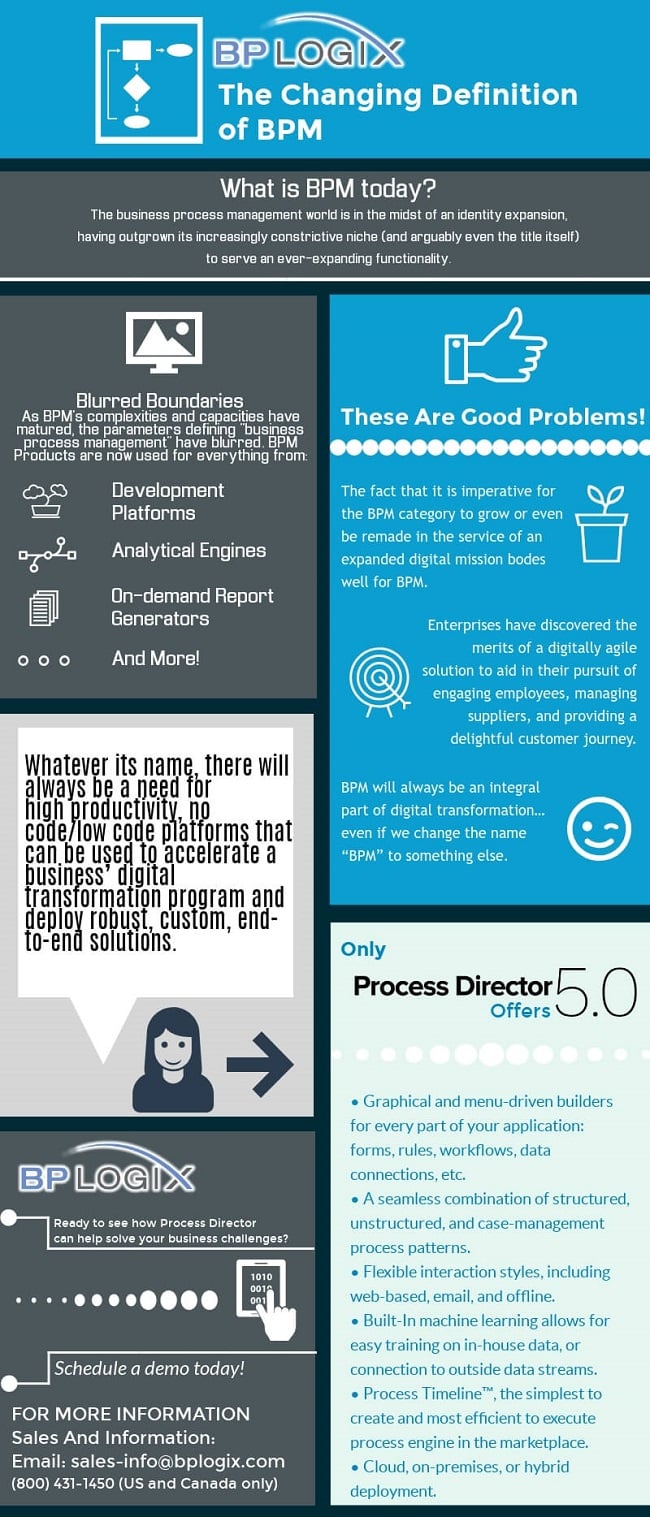What is BPM (Business Process Management)?
What is business process management (BPM), you ask? We here at BP Logix think of the BPM definition a little more simply: business process management (BPM) is a practice of refining business processes that will improve process efficiency and profitability. Really, BPM is what it sounds like -- identifying, improving, and maintaining processes within a business.
Passing a routine piece of paper to a co-worker is a business process. It’s when you establish rules and a method, either a manual method or technology-driven method, to govern how and when that piece of paper is distributed that you enter the realm of BPM. That’s our specialty.
What BPM Is Not
It's not a job or role within the process. If you use BPM software to manage work orders, the person completing those orders is not managing BPM, they are working within it. However, the manager or admin who designs the work flow to get the job done is participating in BPM.
It’s important to be clear. Business process management does not tell you how to do your job. It informs your entire organization how a business process gets done efficiently and ensures it gets done right every time.
What is BPM Software?
What is BPM software? Well, we all want more time and money. Businesses are no different. BPM software is equipped with a series of BPM tools that help model, automate, execute, control, measure and optimize business processes which leads to process improvement and more profit. The setup takes some investment initially, but in the end, the benefits of BPM software are vast…not to mention measurable. BPM implementation will allow your organization to- eliminate redundancies
- minimize errors
- complete work sooner
- shorten project time lines
- make decisions easier
- follow compliance requirements correctly
- reduce paper consumption
- automate processes and alleviate workloads
Your organization is different from the next. Your needs are special to you.
That’s why a customizable solution is required for success. You can see specific examples of how organizations use BP Logix’s customizable BPM software, Process Director, throughout our site. To start, check out BPM examples on the successful use of Process Director in busy organizations.
One Last Note…
So, what is BPM? While outcomes differ, business process management matters globally because of the headaches it prevents. Process Director from BP Logix will empower your organization for all the reasons we list above and so much more. Ready to see for yourself? Learn more about our free BPM software demo of Process Director and contact us today for a demonstration from a BP Logix software expert.
View Infographic



 There are a lot of perceptions about how productivity and business goals are handled by organizations. Most view attempts to gain efficiency as the domain of IT but it turns out it is not solely the result of implementing technology. Efficiency is also attributable to how all groups in the company collaborate to achieve growth.
There are a lot of perceptions about how productivity and business goals are handled by organizations. Most view attempts to gain efficiency as the domain of IT but it turns out it is not solely the result of implementing technology. Efficiency is also attributable to how all groups in the company collaborate to achieve growth.


